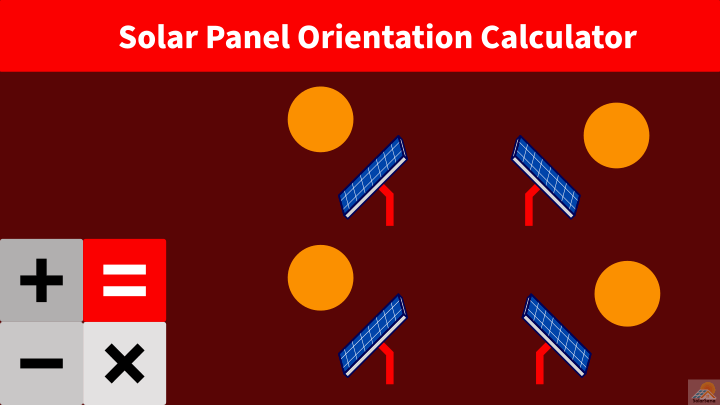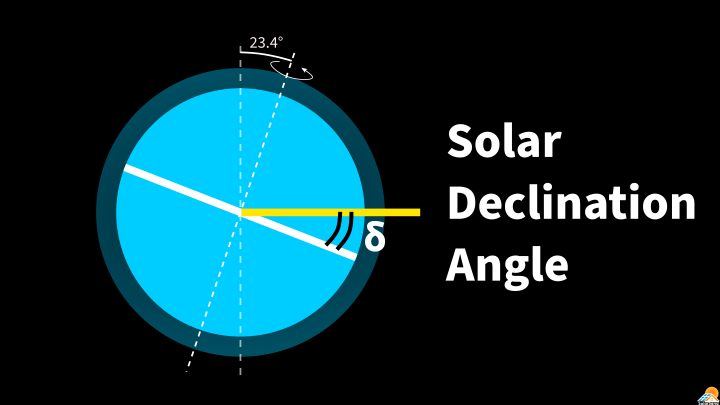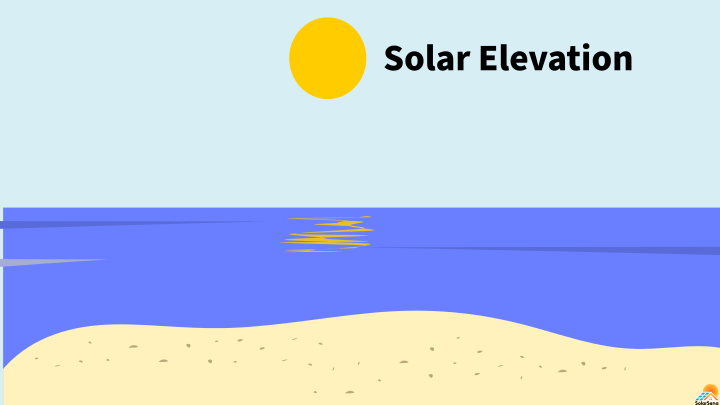Your solar panel orientation is an important part of the sizing of photovoltaic and solar thermal systems. Since solar power produced is directly proportional to the orientation of solar panels, the right orientation can not only maximize solar power but also decreases the cost of the project.
The orientation is composed of two parameters: direction and tilt angle.
Solar Panel Orientation calculator
Select your timezone and enter your coordinates (latitude and longitude) to calculate the optimal orientation for fixed solar panels, twice adjusted solar panels, quarterly (seasonally) adjusted solar panels, and monthly adjusted solar panels.
You can find your coordinates from Google Search.
The calculator finds the best orientation for all four possible scenarios (fixed, twice adjustable, seasonally adjustable, and monthly adjustable). And they are displayed in the following four tables.
| Months | Optimal tilt angle | Optimal direction |
|---|---|---|
| Entire year |
| Months | Optimal tilt angle | Optimal direction |
|---|---|---|
| March to August | ||
| September to February |
| Months | Optimal tilt angle | Optimal direction | Northern hemisphere | Southern hemisphere |
|---|---|---|---|---|
| March to May | Spring | Fall | ||
| June to August | Summer | Winter | ||
| September to November | Fall | Spring | ||
| December to February | Winter | Summer |
| Months | Optimal tilt angle | Optimal direction |
|---|---|---|
| January | ||
| February | ||
| March | ||
| April | ||
| May | ||
| June | ||
| July | ||
| August | ||
| September | ||
| October | ||
| November | ||
| December |
What is the solar panel orientation?
There are two factors in the orientation. The first is the direction, and the second is the tilt angle. Both are independent but vital parts in optimizing orientation for solar panels. The direction is calculated using the azimuth angle of the sun, which is simply a directional measure of the sun in the sky. Knowing the azimuth angle, we can tell the direction of the sun in the sky.
The second factor, the tilt angle, is decided by the elevation angle of the sun, i.e., at what altitude the sun is. If the sun is high in altitude, then the tilt angle would be small and solar panels would be more horizontal. For low altitudes, the tilt angle is large, and solar panels are vertical.

Optimal orientation
Fixed solar panels are a convenient and preferred choice. Solar panels are mounted permanently at a particular orientation. This orientation must be such that panels must continue considerable power throughout the year, in all seasons.
As a general rule, the optimal direction for solar panels in the northern hemisphere is south. And in the southern hemisphere, the direction is north.
So, the optimal direction for solar panels in the entire United States is south.
The optimal tilt angle for fixed solar panels, as per a rule of thumb, is equal to the latitude of your location. For example, San Diego is at 32.71° N, so the tilt angle in San Diego is 33°.
Optimal orientation for twice adjusted solar panels
Twice adjusted solar panels have to reorient twice a year, from March to August and from September to February.
The direction might be the same or different for both half-years, but the tilt angle is always different.
The orientation for solar panels in San Antonio (29.42° N, 98.49° W) is calculated in the below table.
| Months | Optimal tilt angle | Optimal direction |
| March to August | 10° | Southeast |
| September to February | 51° | South |
Optimal orientation for seasonally adjusted solar panels
For seasonally adjusted solar panels, we reorient solar panels quarterly according to all four seasons: spring, summer, fall, and winter.
Seasons and their months vary in different countries. But here, we will follow the below table.
| Months | Northern hemisphere | Southern hemisphere |
| March to May | Spring | Fall (or autumn) |
| June to August | Summer | Winter |
| September to November | Fall (or autumn) | Spring |
| December to February | Winter | Summer |
The calculator gives four directions and four different tilt angles. The directions might be the same or different.
Take an example of San Francisco (37.77° N, 122.42° E).
| Months | Optimal tilt angle | Optimal direction | Northern hemisphere |
| March to May | 28° | South | Spring |
| June to August | 17° | South | Summer |
| September to November | 46° | South | Fall |
| December to February | 59° | South | Winter |
From the above table, we can see the tilt angle is highest in winter. That is because, in the winter months, the sun is near the horizon, thereby solar panels are positioned vertically.
In the summertime, the sun is overhead at high altitudes, and panels are positioned flat. So, the tilt angle is the lowest in this portion of the year.
For the rest of the two seasons, the tilt angle is in-between.
The optimal direction, which is south, remains the same for all seasons in San Francisco.

Optimal orientation for monthly adjusted solar panels
Monthly optimizing orientation will feel a chore since you have to readjust panels every month. You can find the optimal direction and angle for a particular month of the year using the calculator above.
The example beneath is for Salt Lake City, Utah (40.76° N, 111.89° W).
| Months | Optimal tilt angle | Optimal direction |
| January | 63° | South |
| February | 55° | South |
| March | 44° | South |
| April | 31° | South |
| May | 22° | South |
| June | 18° | South |
| July | 21° | Southeast |
| August | 28° | South |
| September | 38° | South |
| October | 50° | South |
| November | 59° | South |
| December | 64° | South |



